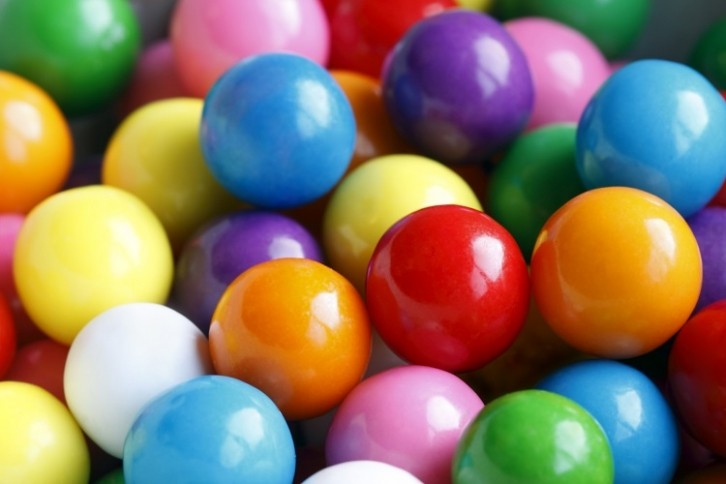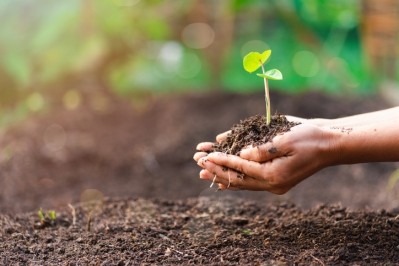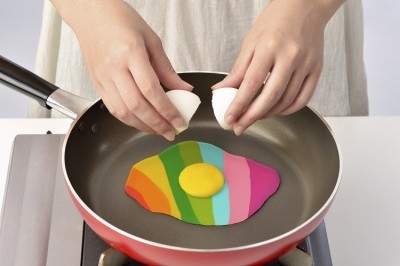Recreating Willy Wonka flavours with food science: 'In principle, we could simulate any flavour'

Ahead of the new film premiere of Willy Wonka in December, Alan Chalmers, study researcher and Professor of Visualisation at the University of Warwick, explores the film’s popular flavour combinations.
A 2023 research paper, which brought together scientists from the University of Warwick, University Hospitals Coventry & Warwickshire and Royal College of Art, looks at the concept of virtual flavour, engaging in high-fidelity simulation of real flavour experiences. “Flavour is just the sensation of the taste, aroma and mouthfeel of food or drink in your mouth,” Alan Chalmers, Professor of Visualisation at the University of Warwick, told FoodNavigator.
Professor Chalmers has developed a new flavour experience set in a virtual environment. Using the technology enables food industry insiders to taste and identify flavours from a sample. Hailed as Warwick’s Willy Wonka, the professor’s approach takes food samples for analysis to then accurately simulate their authentic flavour by extracting its tastes, aromas and mouthfeel.
An expert in flavour simulation, Professor Chalmers hopes the flavour research opens up interest in and understanding the science of flavours. “While we may not have discovered the source of snozzberries, our research invites everyone to wonder about the extraordinary possibilities within the science of flavours,” said Chalmers.
Flavour choices and combinations
Researchers and manufacturers can authentically simulate food or drink with UK Food Standards Agency food-safe chemicals by analysing food or drink and extracting their components.
The scientist explains that by taking a fork full of roast turkey, gravy, Brussel sprouts and roast potato, for example, specialist devices can then analyse these elements to extract the exact taste, aroma and mouthfeel components of the food ensemble.
After landing on the ‘recipe’ required to create these foods, creators can use food-safe chemicals to recreate this exact flavour. A specific food-safe chemical is used for each component. For example, sucrose is used to simulate the sweetness component.
“We’re looking to authentically recreate real flavour experiences,” said Chalmers. To date, the research team has successfully recreated rooibos tea and various blends of the tea, different orange juices including orange cordial, and marmite and vegemite.
“In principle, we could simulate any flavour, but to analyse the real flavour requires specialist equipment and is expensive,” said Chalmers. However, the real flavour only has to undergo analysis once. Then, manufacturers can simulate and manipulate it as often as possible using UK Food Standards Agency-approved food-safe chemicals.
From fantasy flavours to replicable realities
Professor Alan Chalmers and Warwick University were inspired to explore Willy Wonka’s creations amid the hype of the upcoming film release and its eclectic flavour combinations. “The attention on Willy Wonka is sky-high at the moment as the much-anticipated film is due out very soon,” said Chalmers.
In his research, Professor Chalmers identified the food science behind making some of Willy Wonka’s famous creations possible, such as a three-course bubblegum-focused meal, lickable wallpaper and the everlasting gobstopper. “His famous creations are renowned for creativity and experimentation with flavour, which is exactly what our research is investigating,” Chalmers added.
To produce a three-course roast in bubble gum, manufacturers can put the chemicals’ correct combinations in the gum to give consumers the same flavour as the individual components of real roast turkey, gravy, Brussel sprouts and roast potato to replicate their taste.
Recreating lickable wallpaper, Chalmers said, “would be quite straightforward to do''. By embedding the food-safe chemicals for each desired flavour component into the wallpaper, consumers will perceive its flavour as they lick the wallpaper.
To produce the everlasting gobstopper, Chalmers said, “I could imagine a ball of, e.g., hard plastic which is impregnated with a sweet flavour.” While the sweet won’t get smaller, the sweet flavour must be replenished at some point. “I could imagine the centre of the plastic ball contains the liquid, and this is drawn out as the person sucks,” said Chalmers. The liquid could be replaced when required.
Finding flavours, virtually
The researchers’ original goal was to simulate real-world, authentic experiences that are fully multisensory. Traditional virtual reality (VR) systems only use visuals and audio, but the real world is multisensory, including smell, feel and taste. “So these need to also be simulated, especially if you want to really understand what it was like to be ‘there’ in an environment,” said Chalmers.
After engaging in virtual archaeology work, the researchers created a multisensory simulation environment. The team explored the experience of living in a past environment, such as a mediaeval tannery in Coventry, which they studied for the Coventry City of Culture, and a Roman feast.
To understand how the researchers could recreate any flavour authentically, they asked people to score the similarity between flavour samples, which varied between real, virtual or the same. The flavours were so similar that they were hard to distinguish. “Even the chief taster of a rooibos tea manufacturer could not distinguish between real and virtual rooibos tea,” Chalmers added.
Flavour perception test for neurodegeneration
In their flavour perception test for Alzheimer’s Disease screening, the researchers ask individuals if they can distinguish between two different flavours. Their current tests seek to see if they can differentiate between two sweetness levels. “Any neurodegeneration affects people’s ability to smell and taste,” Chalmers noted.
The researchers' study is still ongoing. “For the similarity test, we got a good match between real and virtual for most of our flavours,” Chalmers commented. Results show it is possible to simulate, with a high degree of precision, a real flavour experience that consumers and manufacturers may be able to replicate. The results show that precisely controlled ‘flavour discovery journeys’ can also occur using virtual flavours.
“For flavour perception, people clearly have different abilities to distinguish flavours,” Chalmers detailed. The research team will shortly be doing MRI scans to understand the correlation between the flavour test performance and any neurodegeneration better.






















